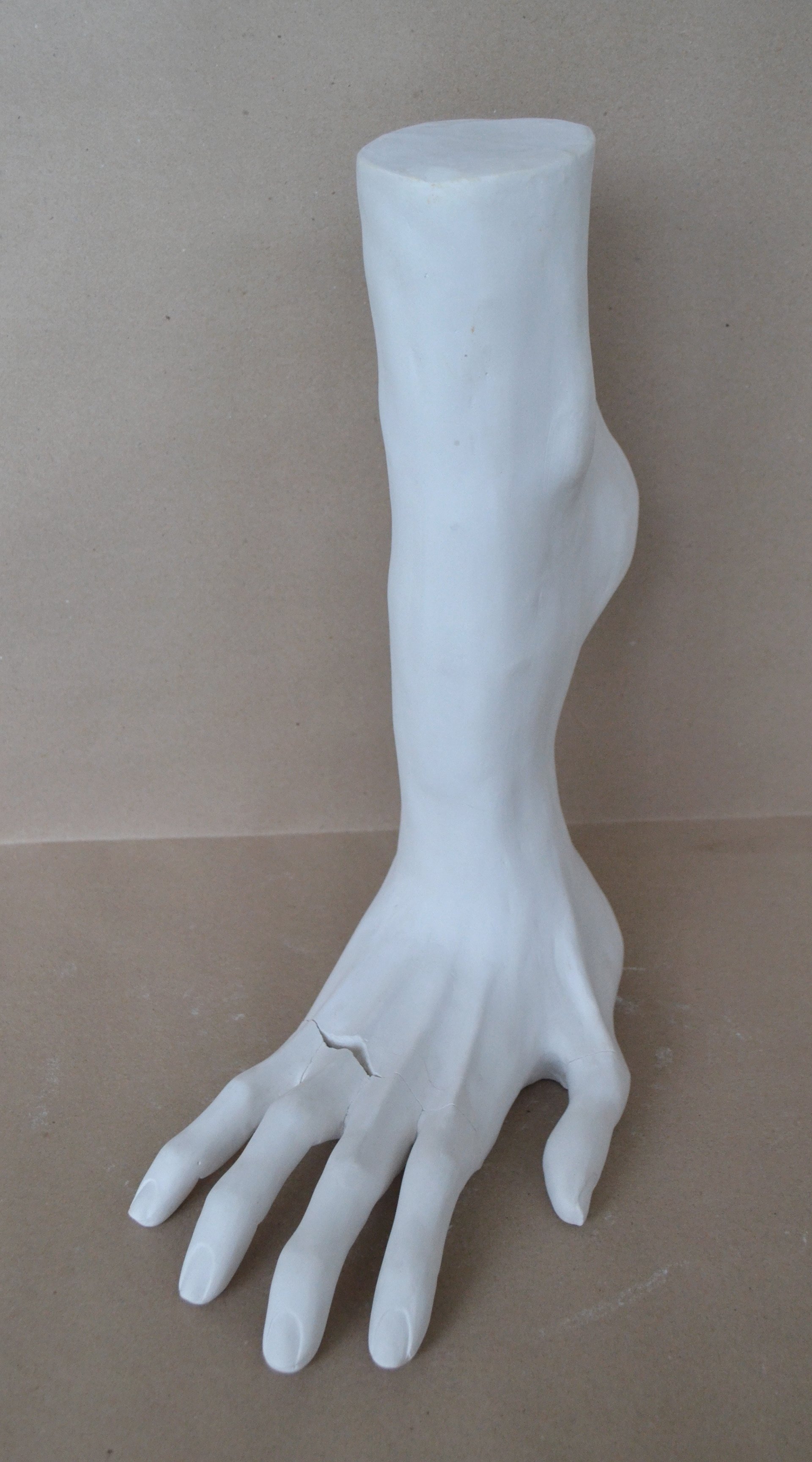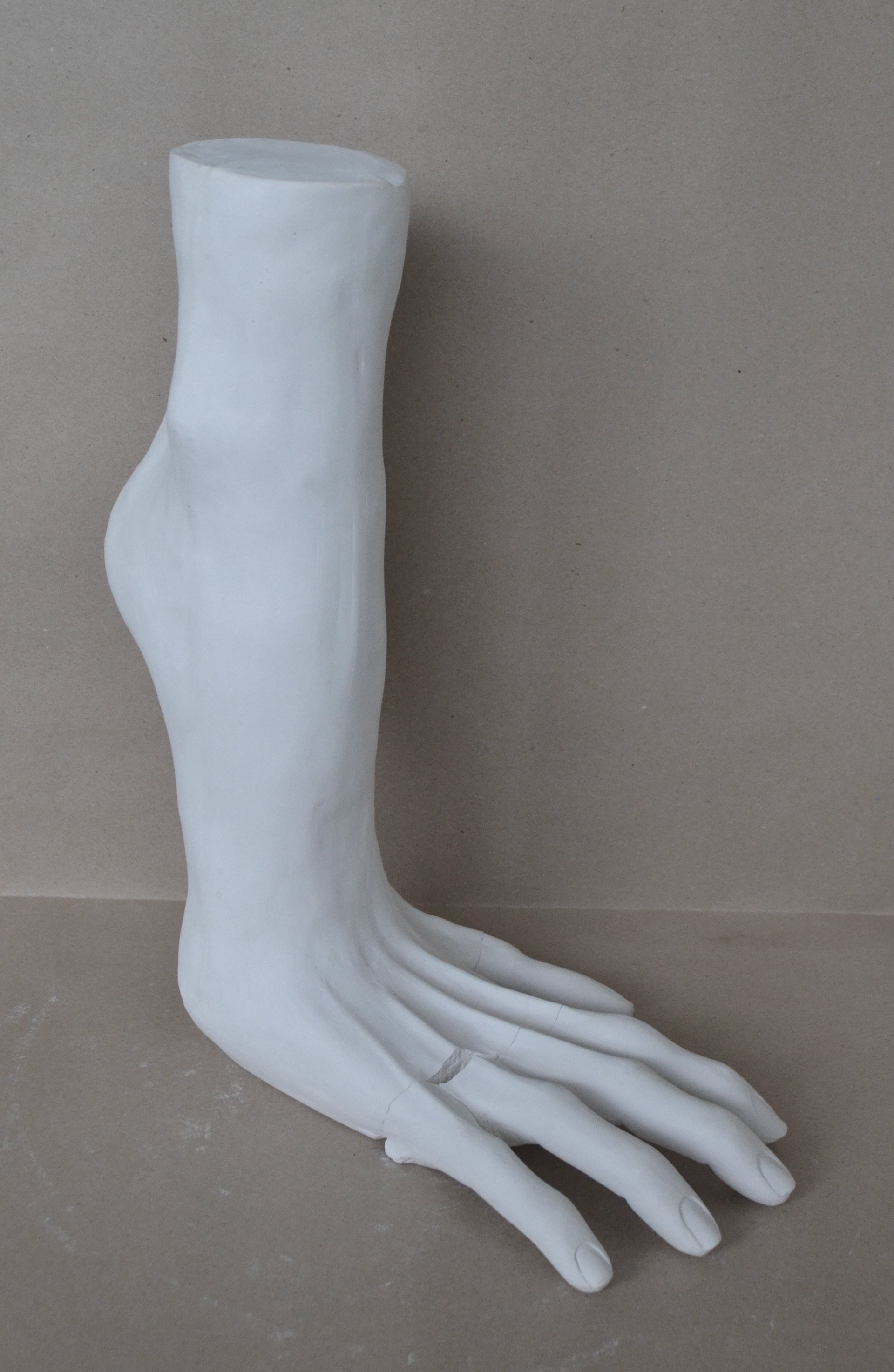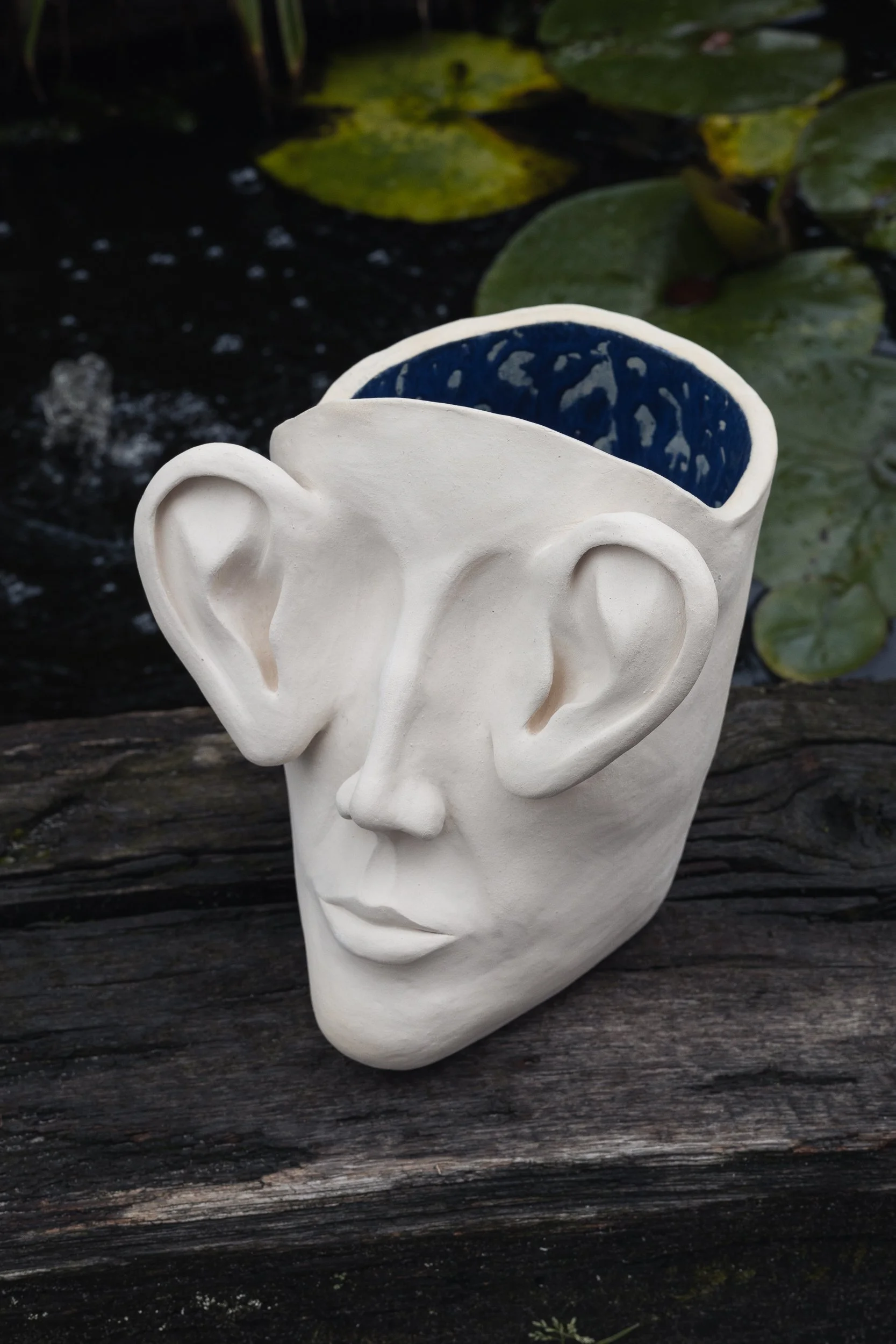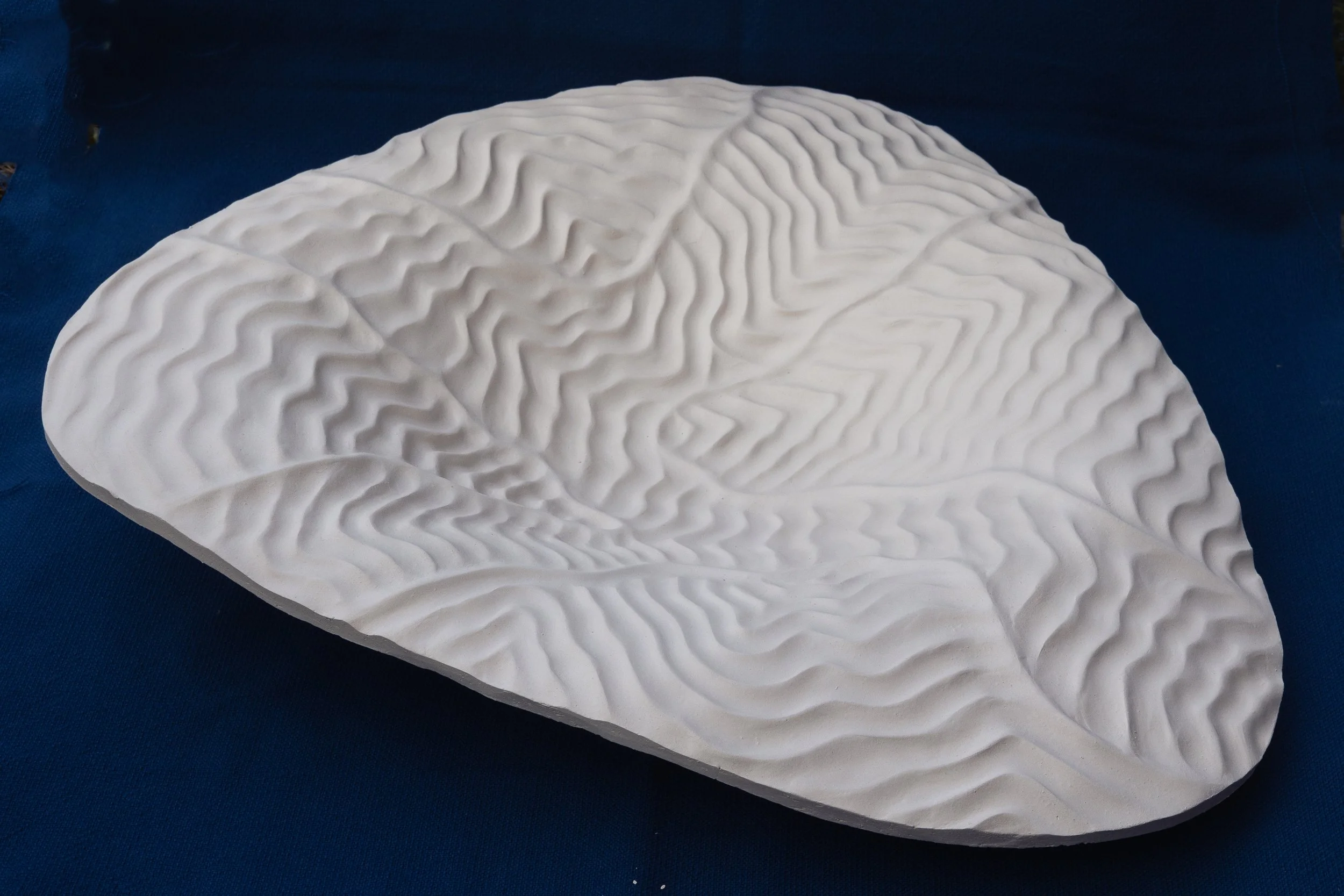
Sculpture
-
The material Lisa mostly use for her sculptures is clay.
A material used by our ancestors that is so direct, sustainable and grounding. That can be transformed simply through the use of hands and wooden tools.
-
The main focus in her sculpture making is the idea, with the basis being the most simple and familiar: the human body, every day objects and nature, with a surreal twist.
-
Altghough the material and ideas may vary the style can be recognized in each of them. Minimalistic, clean with an emphasis on the craftmanship.
Seeing
the sounds
2022
When we close our eyes for a while we can listen better. We can see what we need to hear when we empty our minds. A sculpture inspired by meditation. Can also be used as a flower pot.



In accordance
to the waves
2022
Allowing the clay to lead the way of the patterns through following intuition and least resistance. The pattern was created intuitively only by the use of hands. Inspired by the ripples of water, the flow of constant movement back and forth and how repetitive, smooth movements effortlessly shape rocks.
Exhibited at a group exhibition in Der Aa Kerk in Groningen, Netherlands for the Lucht 2.0 stipendium.


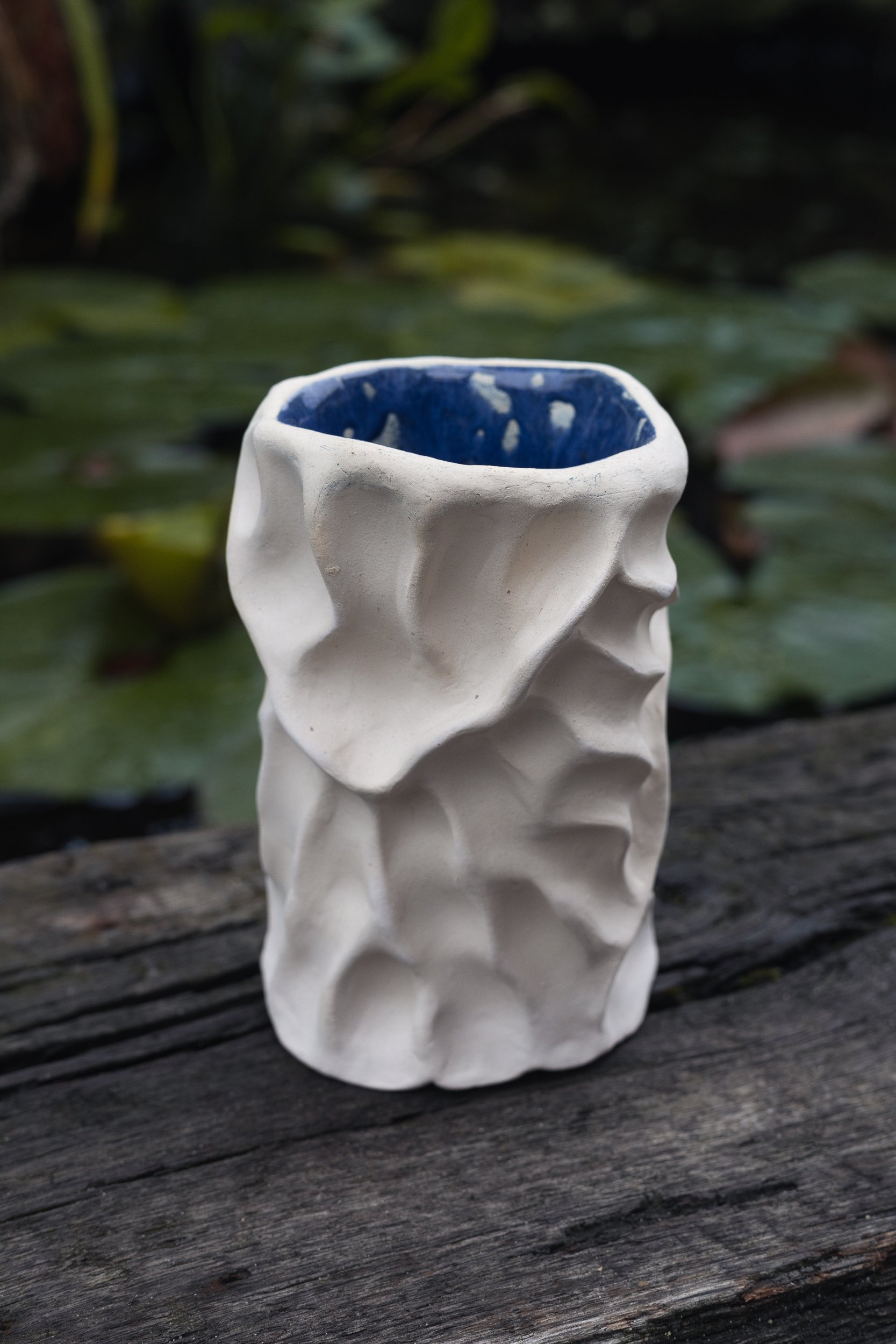

Nosey
2019
Zooming in, isolating and enlarging the nose. Creating an almost abstract form of something so familiar as the nose. The purpose of this sculpture was to investigate when is a shape still a nose. And also because of the enjoyment of being surrounded by enlarged, slightly surreal sculptures. 59cm x 29cm x 21cm




Hearing
the soil
2017
Connecting to the soil, fully immersing into it, only sticking the ears out to listen. Grouping together, separating. Listening to the surrounding. A visualization of reflecting on our role as creatives, how we do it now and what shifts can be made.

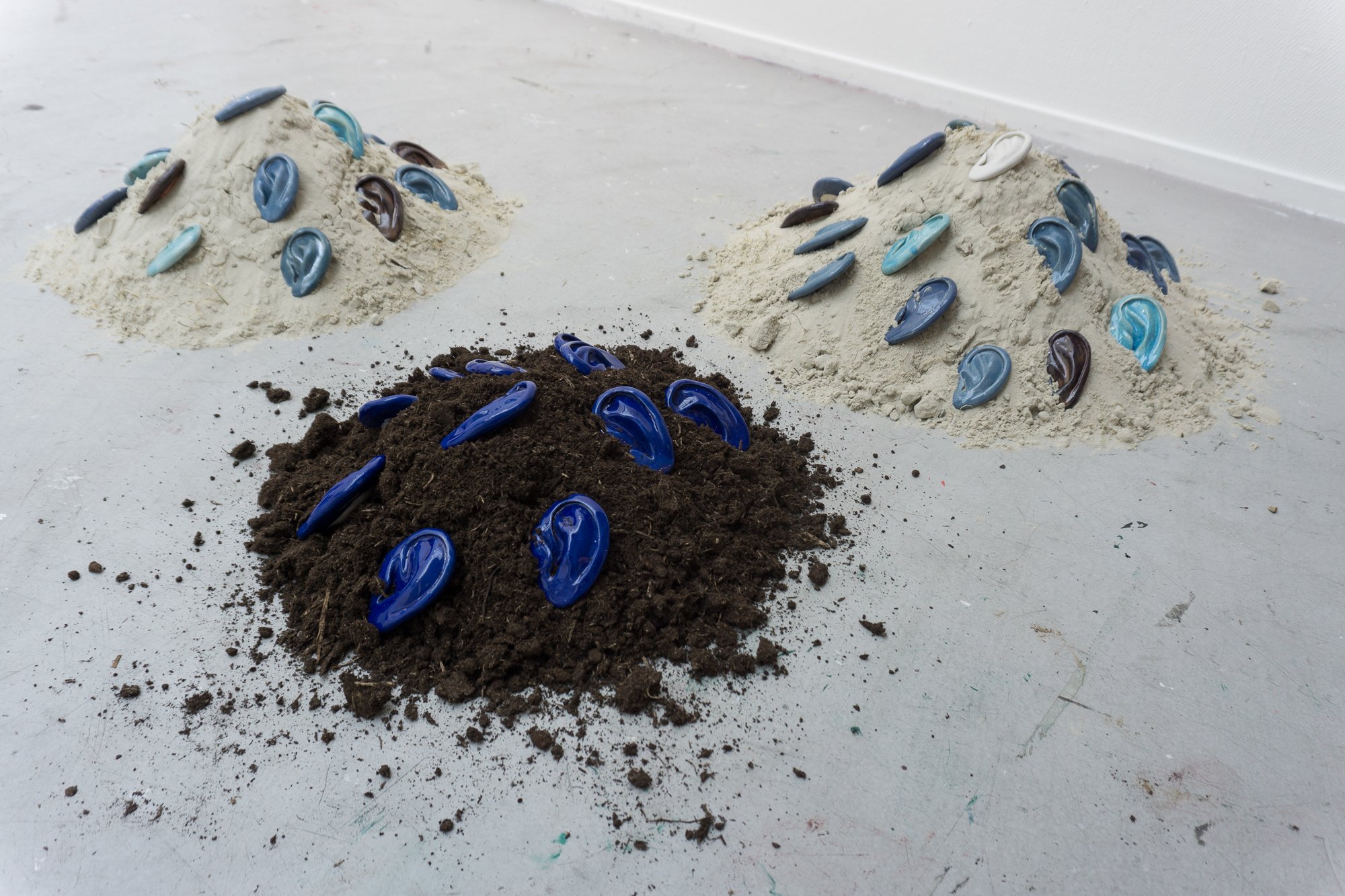

Handplants
2017
Taking care of the plants in our homes. Giving them water, talking with them. Getting joy from seeing them flourish. Seeing us in them. The plants becoming us.


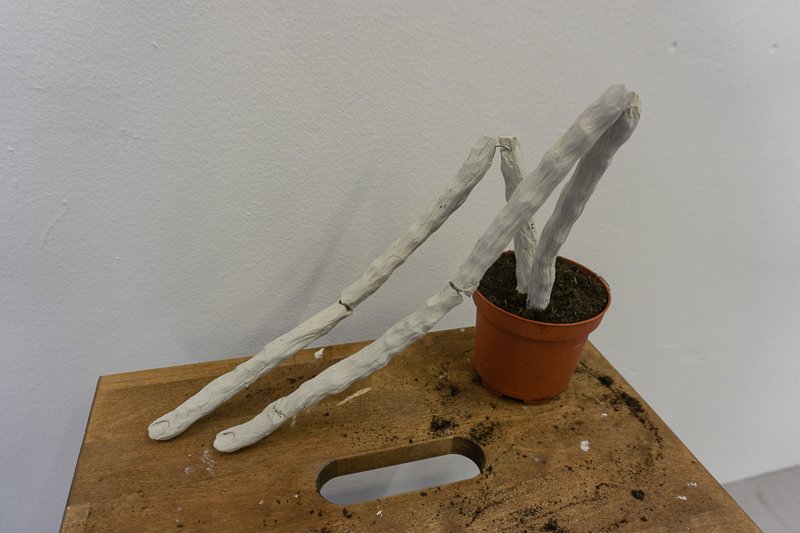

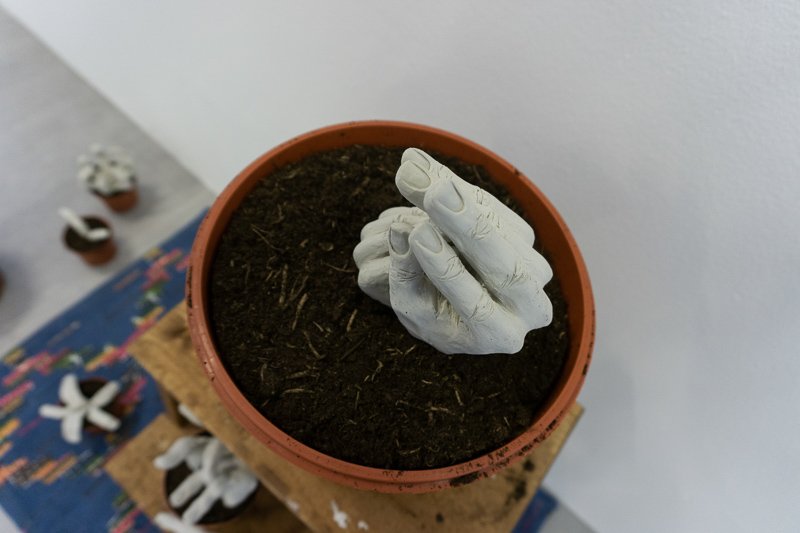
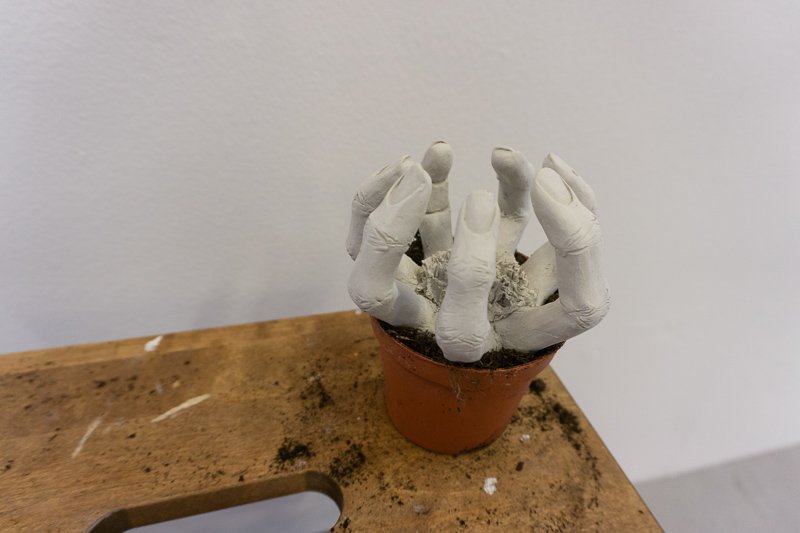
Handfoot
2016
A surreal combination of the two body parts that are very characteristically human: hands and feet. So similar but yet so different. Enables us to create, move and touch.
Made in clay and then cast in plaster. The cracks from the broken fingers are left on purpose to embrace imperfection and let changes and “mistakes“ during the process happen.
